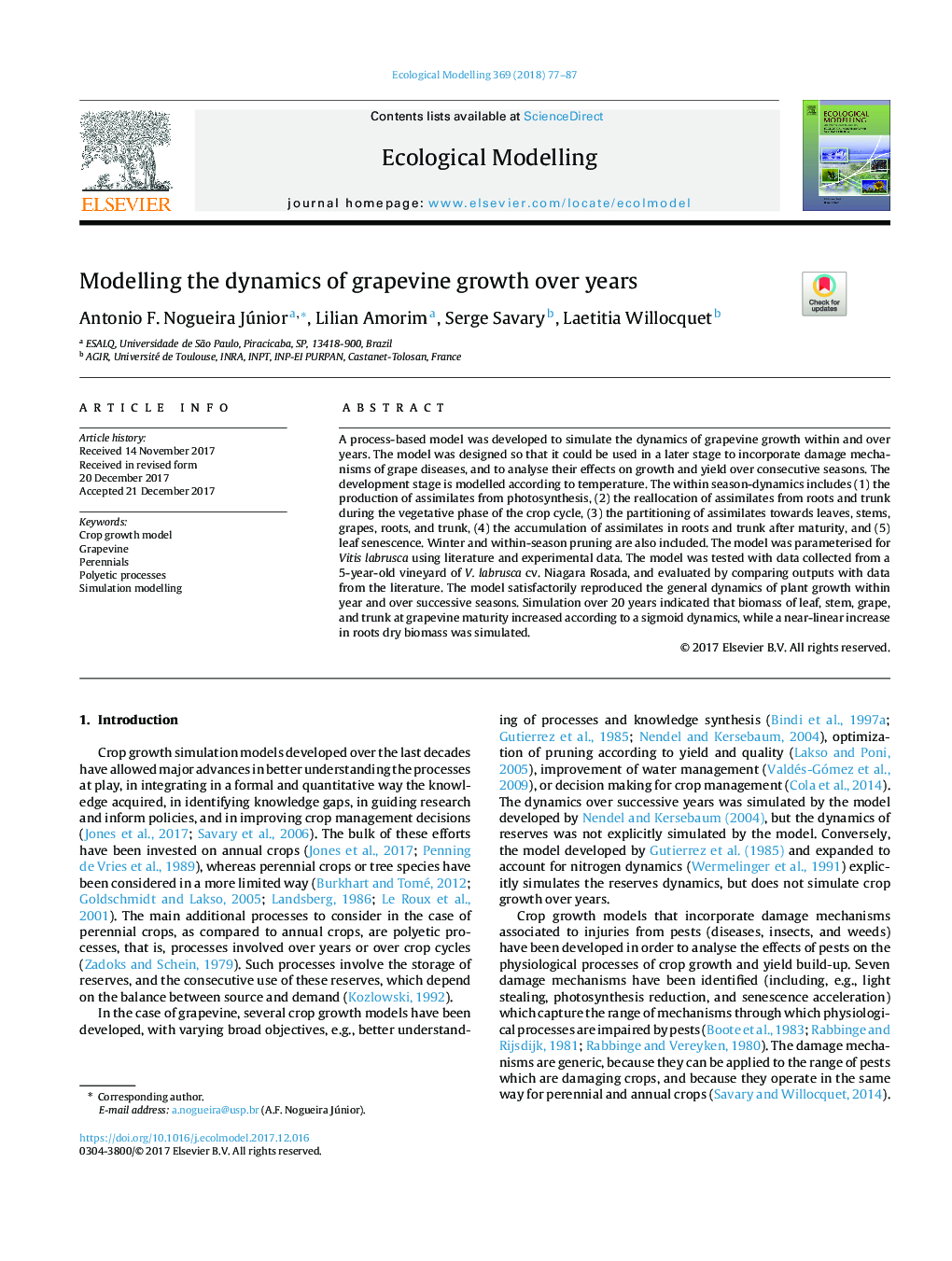| Article ID | Journal | Published Year | Pages | File Type |
|---|---|---|---|---|
| 8846122 | Ecological Modelling | 2018 | 11 Pages |
Abstract
A process-based model was developed to simulate the dynamics of grapevine growth within and over years. The model was designed so that it could be used in a later stage to incorporate damage mechanisms of grape diseases, and to analyse their effects on growth and yield over consecutive seasons. The development stage is modelled according to temperature. The within season-dynamics includes (1) the production of assimilates from photosynthesis, (2) the reallocation of assimilates from roots and trunk during the vegetative phase of the crop cycle, (3) the partitioning of assimilates towards leaves, stems, grapes, roots, and trunk, (4) the accumulation of assimilates in roots and trunk after maturity, and (5) leaf senescence. Winter and within-season pruning are also included. The model was parameterised for Vitis labrusca using literature and experimental data. The model was tested with data collected from a 5-year-old vineyard of V. labrusca cv. Niagara Rosada, and evaluated by comparing outputs with data from the literature. The model satisfactorily reproduced the general dynamics of plant growth within year and over successive seasons. Simulation over 20 years indicated that biomass of leaf, stem, grape, and trunk at grapevine maturity increased according to a sigmoid dynamics, while a near-linear increase in roots dry biomass was simulated.
Related Topics
Life Sciences
Agricultural and Biological Sciences
Ecology, Evolution, Behavior and Systematics
Authors
Antonio F. Nogueira Júnior, Lilian Amorim, Serge Savary, Laetitia Willocquet,
